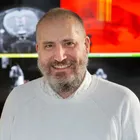Platform
CurieCoreTech Experimental Radiotherapy (RadeXp)
Department :
Translational Research DepartmentNetwork :
CurieCoreTechPresentation

In the last few years, significant advances have been made in radiation therapy techniques (complex irradiation schemes, higher dose rates, new radiation types, wider range of indications etc.), but not all these advances have been validated in preclinical studies. The challenge lies in the complexity to apply these novel radiation treatments to cellular model or small animals. A platform providing support through interdisciplinary skills in experimental radiotherapy was therefore required, to improve the development of radiotherapy techniques.
Description
The Experimental Radiotherapy Platform RadExp was initiated in 2011 by the Department of Translational Research to bring together the necessary scientific and technical expertise, ranging from medical physics to pre-clinical and clinical research, to support the development of new radiation therapy strategies.
The facility offers access to a large panel of irradiation systems, tools and skills, which makes possible to thoroughly investigate innovative radiotherapy techniques (combined treatments, complex irradiation configurations, higher dose rates, new radiation types…) in the framework of preclinical and translational studies.
Aims
- Offering access to a large panel of irradiation facilities
- Gathering together scientific and technical expertise ranging from medical physic to clinical and pre-clinical research providing support and guidance to community
Networking
RadeXp is part of Resplandir that is a French network of irradiation platform.
RadeXp is also part of France Hadron that is a NIBH (National Infrastructure in Biology and Health) aiming to improve research in hadrontherapy. It would finance hadron beam time and facilitate the access to hadron sources.
Services
The RadeXp facility supervises the use of all the different irradiation systems available at Institut Curie and guarantees the dose delivered to each sample. It is also responsible for training new users.
The staff provides support for project design, to ensure that the users need is fulfilled, that the most appropriate protocol is selected for the experiment and the best sources of ionizing radiation at the facility (particle microbeam, heavy ion beam, etc) are used.
The involvement of the staff in the achievement of experiments varies, according to the needs of the users. For example, in simpler applications, the users may themselves irradiate the samples (e.g. cells, mice), whereas the use of some devices (Kinetron, SARRP, and the proton beam) or specific configurations (brain irradiation) may require the staff for the irradiations.
The staff can also carry out animal experiments from tumor grafting to the analysis of results. If necessary, we can also develop specific techniques (e.g. orthotopic grafts, specific tissue toxicity assays) or design specific irradiation set-ups.
Equipment
- GSR-D1 (Gamma sources: Cs-137)
- X-ray generators:
- Xrad 320 Dx (320 kV)
- Philips X-ray tube (320 kV)
- SARRP, the Small Animal Radiation Research Platform (225 kV).
- KINETRON (LINAC, 4.5 MeV Electrons)
- Medical Proton beams (ICPO)
Training
- Users training
- Radioprotection course (ENVA, master QUESS)
- M1 Physics (Paris Saclay)
- DQPRM (INSTN)





















